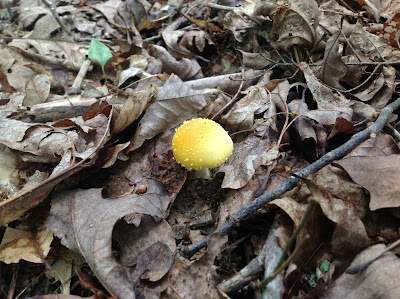I was at Grandview Park last week and found some time to hike back into the area where I have found many Spring ephemerals. I had no camera but did have a 3rd generation iPad and decided to give it a try. The woods were so dense, I walked around for close to an hour before I spotted
Striped Wintergreen and a couple of mushrooms. An ephemeral is about the only plant that stands a chance in a place like that.
I was somewhat impressed with the iPad photo, so I decided to use it for all of the photos in this post. Most were from arounf my home.
The Wild Hydrangea below grows in front of my house on the edge of the road. I have trimmed around it for years and try to protect it but the Department of Highways comes through once a year to with a brush trimmer and one year a right of way crew sprayed herbicide on everything along the road but spared this at my request. Even so, it was the only thing that died back. But, its a survivor.
Chinquapin is a native plant that produces small Chestnut like nuts .The small black wasp had gathered a lot of pollen on its rear legs and was working these blooms thoroughly.
I look at this
Orange Daylilly as a marker plant. Anytime I am in the woods and see this, I know a home site
or cemetery
is close by. This is an old fashioned pass along plant that was introduced from Asia.


























































